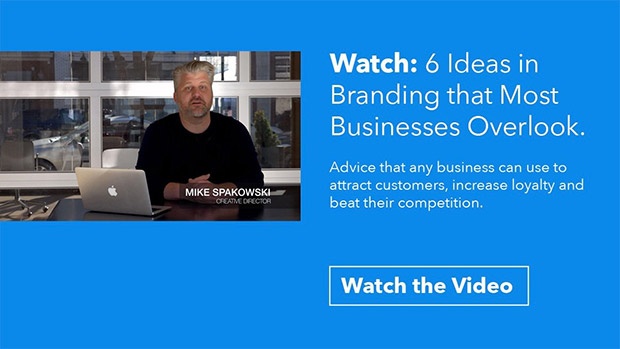The How and Why of Meaningful Marketing
Has a commercial ever made you cry?
Every time the Olympics roll around, so does the Proctor & Gamble “Thank You Mom” commercial. It’s a montage of kids growing into star athletes that highlights all the hard, behind-the-scenes work of their supportive and loving mothers. It’s so touching, I always get a little emotional. And I’m not even a mom. Or an athlete. But I look forward to this campaign every two years–it makes a giant corporate brand feel relatable and warm.
P&G knows that playing into an audience’s emotions makes for marketing that not only sells more razors and toothpaste, but it also creates powerful brand connections.
Why does it matter?
A recent brand study revealed that people wouldn’t care if 77% of brands disappeared. That means that three quarters of brands—big brands, small brands, maybe even your brand—would be gone. And people wouldn’t mind–they may not even notice at all.
It’s because there are a lot of brands out there that don’t make an effort to connect with their customers. They focus more on themselves and their products or services than why those things should matter to their customers. They’re not taking advantage of the opportunities to connect, so they’re forgotten.
That same study discovered that 58% of brand content is not meaningful. That means there’s a huge opportunity to be one of the brands that truly makes an effort to create marketing that stands out from the competition, fosters brand loyalty and reflects an understanding of what customers want.
But how does that make you feel?
Maya Angelou once said, “People will forget what you said, people will forget what you did, but people will never forget how you made them feel.”
It’s true. Research has shown that a consumer’s emotional response to an ad has a far greater influence on whether or not they buy a product that the actual content of the ad does.
It’s because emotion makes marketing meaningful. It creates connections and breaks through the thousands of ads that people are exposed to on a day-to-day basis. Sparking emotion can be a powerful differentiator in crowded markets. And tears, while effective, aren’t the only response that works.
There’s a whole spectrum of emotions that can incite action and create connections that last. There’s anger. Trust. Interest. Sadness. Acceptance. Surprise. Calm. Fear. Amazement. Understanding. With the right mix of messaging and visuals, brands can inspire these feelings and more.
Marketing that makes its audience feel something leaves a lasting impression, keeps your brand top of mind and increases sales. But what emotion is right for your brand?
Find your niche.
To find your emotional sweet spot, look to your brand values. Why do you do what you do? What problems does your product or service solve—and how does it make your customers feel?
Coca-Cola is a global company on a mission to “spread optimism, one bottle at a time, or maybe two bottles to share.” They’re a great example of a brand whose marketing is always a reflection of that greater goal.
One out of many emotional tactics that Coke has used over the years is the Happiness Machine.
It started in 2010, with a vending machine placed on a college campus. When students went to buy a soda, they got a happy surprise. Sometimes it was two sodas. Sometimes it was 10. As more students interacted with the machine, the things coming out of it got bigger and crazier—from liter bottles to a pizza to a six-foot sub sandwich.
The machine sparked smiles and happy moments–the same things that Coca Cola wants its products to inspire. The brand consistently ties the meaning of their mission to their marketing across channels–from vending stunts to social media to in-store displays–and has established strong connections with customers all over the world.
Does it always have to be happy?
While happiness or joy may seem like the ideal emotional response from any audience, it’s not right for every industry. Many brands have found success channeling emotions that are less warm and fuzzy.
Fear, for example, is often used to raise awareness for causes. It’s seen in marketing for organizations like Greenpeace, who want their audience to fear climate change, or Truth, who want to highlight the harsh realities of using tobacco. But fear is also used by brands like Neutrogena and Olay who want their customers to fear wrinkles, and Listerine and Colgate who hope to inspire fear of bad breath.
Sadness is another common marketing emotion. It’s used to trigger compassion–it can inspire your audience to connect and empathize. Have you ever had to change the channel because you couldn’t handle the sight of homeless puppies accompanied by “Angel” by Sarah McLachlan? Why would they do that to us? Because sadness incites action—those commercials led to over $30 million in donations to the ASPCA.
Strong emotions can create strong customer connections–but it is very important to be careful when it comes to playing with your audience’s feelings.
The right emotion, the wrong response.
While emotion is a great marketing tool when it hits the right note, when it misses the mark–it can be disastrous.
We’ve all seen marketing that had good intentions and ended in a PR nightmare. Notable examples include Nationwide’s 2015 Super Bowl Commercial that featured a young boy listing all the things he wouldn’t be able to do because he died in an accident, or Pepsi’s 2017 spot featuring Kendall Jenner using Pepsi to bring peace to a political protest.
So how do you making your meaningful content resonate the way you want it to?
Make sure that what you’re saying is true to your brand’s foundation. Look at your core values—all of your marketing efforts should strive to reflect them in a meaningful way. If they’re not, then it’s not working.
It’s also important to look at your messaging through the eyes of your audience. Is there any way they might interpret it as ingenuine or insensitive? If so, consider something that’s more closely aligned with the way you wish to be perceived.
Cut through the clutter.
Let’s look at that statistic we talked about earlier again: people wouldn’t care if 77% of brands disappeared.
Now, let’s focus on the 23% of brands that are making meaningful connections. Topping the ranking are some of the obvious brands, like Google and Youtube–brands created to build connections. They’re not surprising to see. But right behind them on the list are brands like Gillette and Crest, which just so happen to be P&G brands. That’s pretty impressive for makers of razors and toothpaste.
But what do Gillette and Google have in common? These brands know that the key to making their products and services stand out among the competition isn’t talking about themselves.
It’s highlighting the values, the beliefs and the purpose that they share with customers through the power of meaningful marketing.


